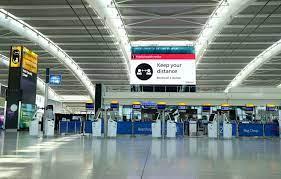Airportsterminals transportation hubs that link people and cargo to various locations across the world are airports. Terminals are essential to maintaining the seamless movement of travellers, their luggage, and aircraft operations within these busy hubs. Terminals act as portals to the sky, bridging the gap between ground and air travel by offering necessary services and amenities to travellers while allowing the smooth operation of the aviation sector.
Key Functions and Features
-
Passenger Services: Terminals are designed to cater to the needs of passengers, offering a wide range of services to ensure their comfort, convenience, and safety. These services include check-in counters, security checkpoints, immigration and customs facilities, boarding gates, baggage claim areas, and information desks. Terminals also provide amenities such as lounges, retail shops, restaurants, duty-free outlets, and rest areas.
-
Baggage Handling: Terminals incorporate sophisticated baggage handling systems to manage the seamless flow of luggage throughout the airport. These systems involve various stages, including check-in, security screening, sorting, and delivery to the aircraft. Advanced technologies, such as baggage tags with embedded barcodes or RFID chips, facilitate efficient tracking and minimize the chances of mishandling.
-
Aircraft Operations: Terminals are designed to accommodate the arrival and departure of aircraft. They include aircraft parking stands, taxiways, and runways, which are crucial for the efficient movement of planes. Terminals also house essential facilities for aircraft servicing, such as fueling stations, maintenance hangars, and cargo handling areas.
-
Security and Safety: Ensuring the safety and security of passengers, staff, and aircraft is of paramount importance in terminals. They are equipped with advanced security systems, including surveillance cameras, metal detectors, body scanners, and explosive detection devices. Trained security personnel closely monitor the terminal to identify and respond to any potential threats.
-
Passenger Flow Management: Terminals employ various strategies to manage passenger flow efficiently. These include well-designed layouts, clear signage, designated queuing areas, automated boarding pass scanners, and self-service kiosks. Additionally, airports utilize real-time data and analytics to optimize terminal operations and reduce congestion during peak travel periods.
